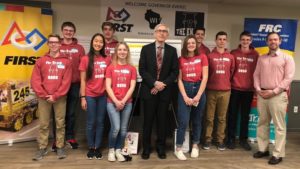STAND FIRST: People today want more than salary and perks, they want lifelong learning opportunities and development pathways.
Among the many pressures faced by businesses today, the IT industry talent gap stands out as one of the most potentially challenging. Analysts have identified a lack of available talent as one of the primary obstacles hindering the adoption of new technologies, which can directly impact business transformation efforts.
The talent gap reflects a shortage of skilled and available people to perform vital roles across businesses. To attract and retain talent, businesses must adapt to new priorities among young people who want more than an attractive salary. They want new ways of working and new ways of learning and skill development throughout their working lives.
We will explore the emerging talent gap, the changing attitudes of the younger generation, challenges in talent pipelines, and the need for tailored approaches to talent development. Finally, we’ll discuss the actions that organizations, including Schneider Electric, are taking.
Emerging skills gap
A growing body of evidence points to a significant skills gap in businesses worldwide. According to research from McKinsey, nearly half of businesses (43%) report a talent gap, with nearly a quarter (22%) expecting one in 2-3 years, with a similar projection for the 3-5-year timeframe. A Gartner survey from late 2022, found that the strong majority (86%) of CIOs reported facing more competition for qualified candidates and nearly three quarters (73%) expressed worry over IT talent attrition.
This skills gap has the potential to cripple growth and transformation aspirations among large swathes of ambitious and growing businesses.
Changing times and attitudes
This gap is in part, a consequence of shifting demographics and the influence of the pandemic, which has prompted individuals to re-evaluate their lifestyles and work dynamics. Among current workers, including the so-called Millennials and those even younger, the paramount goals of job satisfaction and developmental prospects have emerged. These aspirations significantly influence their decisions to secure or remain in a position.
Furthermore, this demographic places high value on mobility when pursuing these priorities. Remarkably, despite the effects of the pandemic, a millennial is twice as likely to have changed jobs within the past two years, often attributing this decision to factors like job satisfaction and developmental opportunities. Interestingly, these reasons take precedence even when the overall remuneration falls below their criteria.
Additionally, considerations encompassing Environment, Social, and Governance (ESG) factors have also become a key differentiator. Emerging talent actively seeks out companies that have embraced these principles as defining values. Despite these positive trends, substantial challenges persist in creating a robust talent pipeline.

Talent pipelines
Encouraging the adoption of Science, Technology, Engineering, and Mathematics (STEM) education at secondary and tertiary levels requires dedicated efforts to foster greater acceptance.
Beyond these challenges, another significant gap that warrants our attention is the “lack of new age digital/tech talent.” This gap casts a shadow across multiple industries, posing an obstacle to the relentless progress driven by technology.
In this era of digital transformation, the demand for specialized skills in emerging technologies, such as artificial intelligence, blockchain, cybersecurity, and data analytics, has surged exponentially. The allure of these advancements has, unfortunately, not been met with a proportional influx of qualified professionals.
Transformation support
This is particularly worrying when another characteristic of this generation is examined — engagement. Gallup reports that less than a third (29%) describe themselves as engaged, with some 12% saying they are actively disengaged, while the remainder fall somewhere in between.
This manifests itself in other areas too, threatening the necessary developmental steps for modern enterprise — transformation. Research by Gartner found that employees are losing support for transformation efforts. Employees’ willingness to support enterprise change collapsed to just 43% in 2022, compared to 74% in 2016. While the speed of change is a key factor, the top-down approach that fails to engage employees beyond senior levels is another contributing factor.
Tailored approaches
A top-down approach is often seen in personal development and coaching approaches in enterprise.
Typically, senior-level people receive specialized, one-to-one programs, tailored to their individual needs and learning preferences, whereas this more coaching-based approach would also benefit people further down in the organization. This is becoming especially relevant for middle managers who are often the first engagement layer for new talent, and therefore talent development.
Developing education and awareness
It is vital for vendors and ecosystem drivers to provide more material support, in resources and effort, to allow new generations of workers to learn and develop. New generations of talent will require their needs to be met, in terms of providing engaging, fulfilling work, with reputable employers, accompanied by well-defined lifelong learning pathways that span from industry entry through to personal and professional development.
With the application of new technologies to develop new educational materials, delivery methods and engagement, it is possible to accommodate multiple consumption styles, allowing the employee to set their own learning pace and preference.
That is why we introduced a new program with digital upskilling tools and training for Malaysian companies in 2021, “mySchneider Consultants, Designers and Engineers Program,” which is a digital ecosystem designed exclusively for Mechanical, Electrical and Plumbing professionals. Though targeted, it is already producing valuable data on how people engage and learn.
This experience is being used to help develop local programs too, always with the aim of becoming more diverse and inclusive, offering pathways for learning for all. Our IT Solutions Experts Club builds on this, allowing access to experts and forums to share knowledge, experience and expertise.
We, at Schneider Electric, have a particular aim to ensure that women represent 50% of all new hires, 40% of all frontline managers, and 30% of senior leadership roles in our organization by 2025.
To facilitate this, the Schneider Electric University offers free access to vendor-agnostic education to help train and upskill the next generation of data center professionals. This platform has evolved to offer over 200 data center, energy efficiency, and sustainability courses, and to date has delivered over 1,000,000 courses to more than 650,000 users globally.
Conclusion: Bridging the talent gap for a thriving tomorrow
While a skills gap looms and is poised to widen before it narrows, it’s clear that we need fresh strategies to address this challenge. The path forward involves a multi-faceted approach.
Engaging new talent remains paramount. Creating environments that allure and retain young talent is essential. Beyond attractive salaries, job satisfaction, developmental prospects, and alignment with Environmental, Social, and Governance (ESG) principles are increasingly significant. As priorities shift and learning styles evolve, businesses of tomorrow must adapt to entice, fulfil, and retain a younger workforce that seeks more than financial rewards, parking spaces, and a string of letters after their names.
In our commitment to bridging the talent gap, we at Schneider Electric are striving to create a work environment that appeals to new talent. We are dedicated to developing STEM as a career choice for young individuals, with special attention to promoting gender balance. Through our extensive outreach and community programs, we are forging pathways for lifelong learning, ensuring that ambitious individuals can continually develop themselves and their skills, fostering a more sustainable workforce for tomorrow.
Our partnership with education institutions, alongside the offerings of Schneider University, underscores our commitment to nurturing talent at every stage of their journey.
These initiatives are not mere aspirations; they are a part of our concerted efforts to create a brighter future. Talk to us about how you can build skills and talent with your people, or join our communities to get access to information and resources.




Add a comment